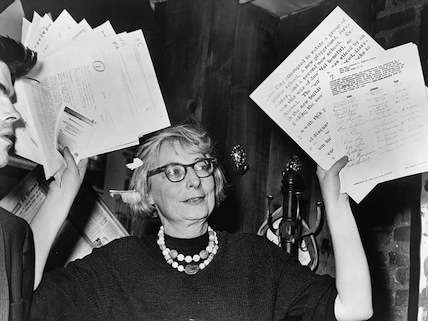Searching for Jane Jacobs' Influence
Some of her most powerful ideas never got much traction.

Jane Jacobs is often called one of the most influential urban thinkers of the last century, and in a sense that's true. Ten years after she died and 100 years after she was born, she remains more famous than most living urbanologists. Her 1961 book The Death of Life of Great American Cities is still widely read today. Several of the practices she criticized, from neighborhood-destroying "slum clearance" schemes to high-rise public housing projects, are now far less popular than they once were, thanks in part to her critiques.
But some of Jacob's core ideas have never gotten much traction among planners—unsurprisingly, since they undermine a great deal of what those planners do. Nolan Gray makes that point in a nicely done article about the ways Jacobs' critique of centralized urban planning parallels F.A. Hayek's critique of centralized economic planning. "For all the love Jane Jacobs has received from urban planners and policymakers since her first book was published," Gray writes,
her greatest theoretical innovation seems to be largely disregarded. Cities across the country continue to centrally plan the minutiae of urban life, from obsessively detailed land-use regulations to impossibly ambitious comprehensive plans. Even many of those who have embraced Jacobs' urban design insights scrapped her theoretical underpinnings, using rigid, top-down plans to create unsettling and unchanging recreations of natural neighborhoods and cities.
You should read the whole thing. And then, if you want to see some thoughts in a similar vein, go here to read one of my earliest articles for Reason—a long complaint about the ways Jacobs' work is misappropriated by people who don't share her more libertarian impluses.


Show Comments (45)